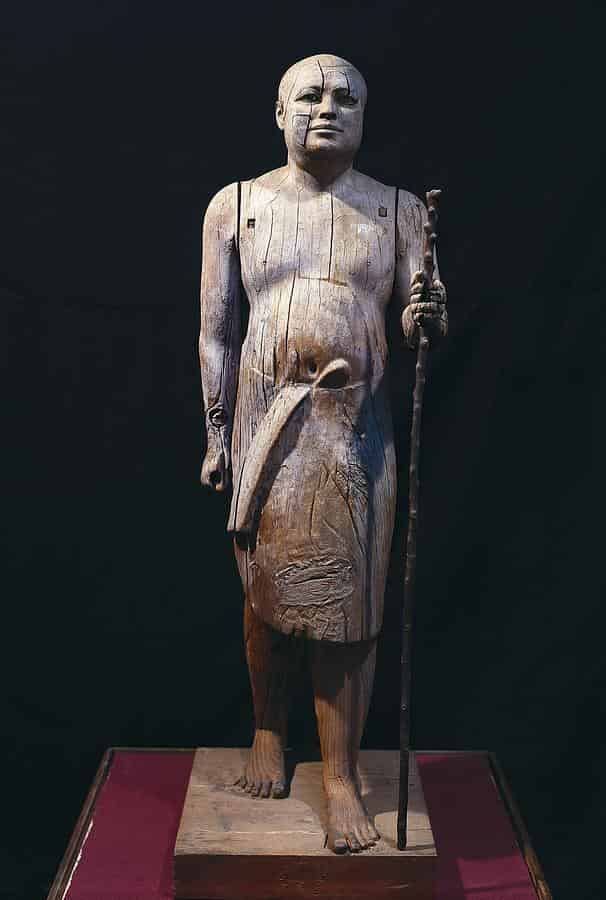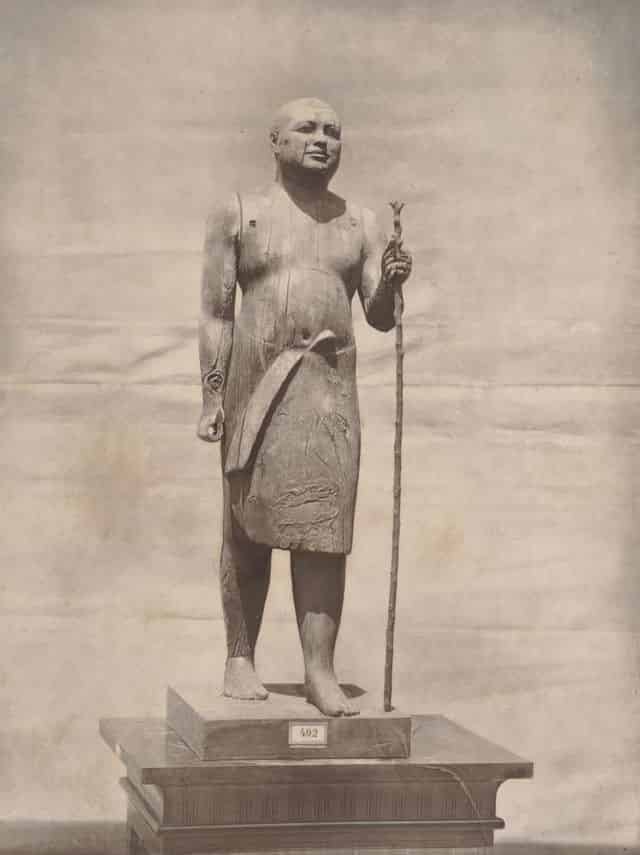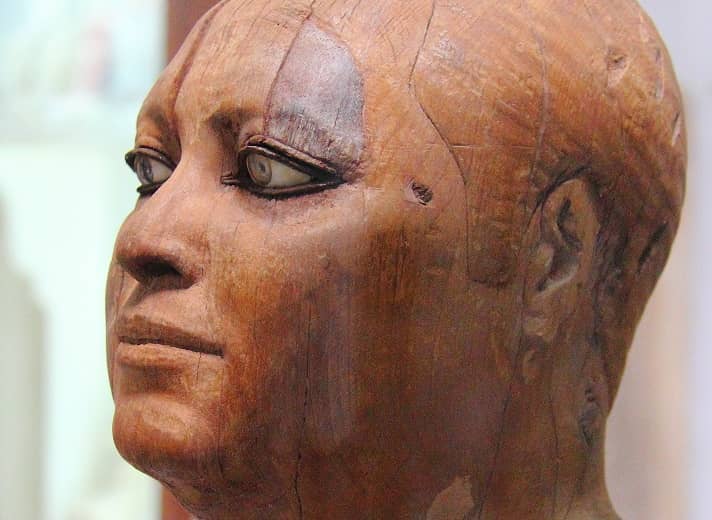Kaaper also known as the (Headman of the village), is a wooden sculpture of the Egyptian nobleman Ka-aper, which was carved in the time of the Old Kingdom of Egypt, in the late 4th Dynasty or the early 5th Dynasty.
Find and history
The statue was found in the year 1860, by the French Egyptologist Auguste Mariette ( 1821 – 1881 ), in the excavations carried out in Mastaba of Ka-Aper, in the necropolis of the city of Memphis, located north of Saqqara, on the west bank of the Nile river.
This location is 30 km from the city of Cairo and 17 km from the city of Giza. It is located north of the stepped pyramid of Djoser.
During the excavation, when unearthing the statue, the Egyptian workers called it Sheikh el-Beled (in Arabic it means “the mayor of the town”), it is believed that due to the certain resemblance between the statue and their local representative (the local mayor).

Historical figure
The statue represents Ka-aper, an Egyptian nobleman who was priest and scribe, lived between the 4th Dynasty and the beginning of the 5th Dynasty (around 2500 BC).
Although his rank was not one of the highest in Egyptian society, he is well known thanks to this wooden statue.
Little is known of Kaaper’s life; his titles were lector priest (Kher-heb) and scribe of the king’s army, the latter possibly related to some military campaigns in Palestine.
Description
The statue has a height of 112 cm (3.67 ft). It is made of sycamore wood, copper, alabaster, rock crystal and obsidian.
It is a round sculpture carved in sycamore wood. It represents a middle-aged man, with his left leg and arm forward. It is carved from a single piece, with the left arm assembled afterwards (this allows the left arm to be flexed forward).
It is believed that Kaaper or Sheikh el-Beled could have carried a banner or rod with symbols that reflected his social position, although they have not been preserved, so it has been replaced by a rod.
The face is very realistic, it is round, with a double chin, wide jaw and full lips (they are curved in a subtle smile). The cheekbones are depicted a little sunken.
The nose is short, if viewed in profile a certain curvature is revealed at its end. The forehead is wide, the hair is represented with a sinuous texture (short and with waves that could have been curly), it is also appreciated as it has receding (baldness).
The eyes are sculpted with great expressiveness, they are made with inlays of white stone, rock crystal for the pupil and shiny metal in the iris, the line of the eyes is outlined with bitumen and under the eyes there are slight dark circles.
While the eyebrows are barely marked. The ears are also represented, but the left ear is in very poor condition, the body has a bulging belly and flabby breasts, corresponding to a mature person with a high social status (the bulging belly represents that he is well fed and performs a comfortable job).
Regarding the clothing, it is semi-naked, it is only covered by a skirt tied at the waist that reaches the knees. The skirt shows a wide fold that can only be seen in its width when looking at the statue in profile.
Although originally it is believed that it was covered by a layer of stucco and painted, this poly-chrome has not survived to the present day. At present the natural color of the wood is appreciated.
It is believed that the functionality of the statue was funerary, since it could represent the physical support for the “Ka” (vital force), in the event that the body of the mummified person was destroyed.
In the sculpture the Law of Frontality is appreciated (although to contemplate the skirt in its full breadth it is necessary to observe it in profile), the Law of Symmetry.
However, it is a sculpture with a naturalistic character represented in the facial features. Also, when the left leg and arm are advanced, it gives the sculpture more dynamism.








